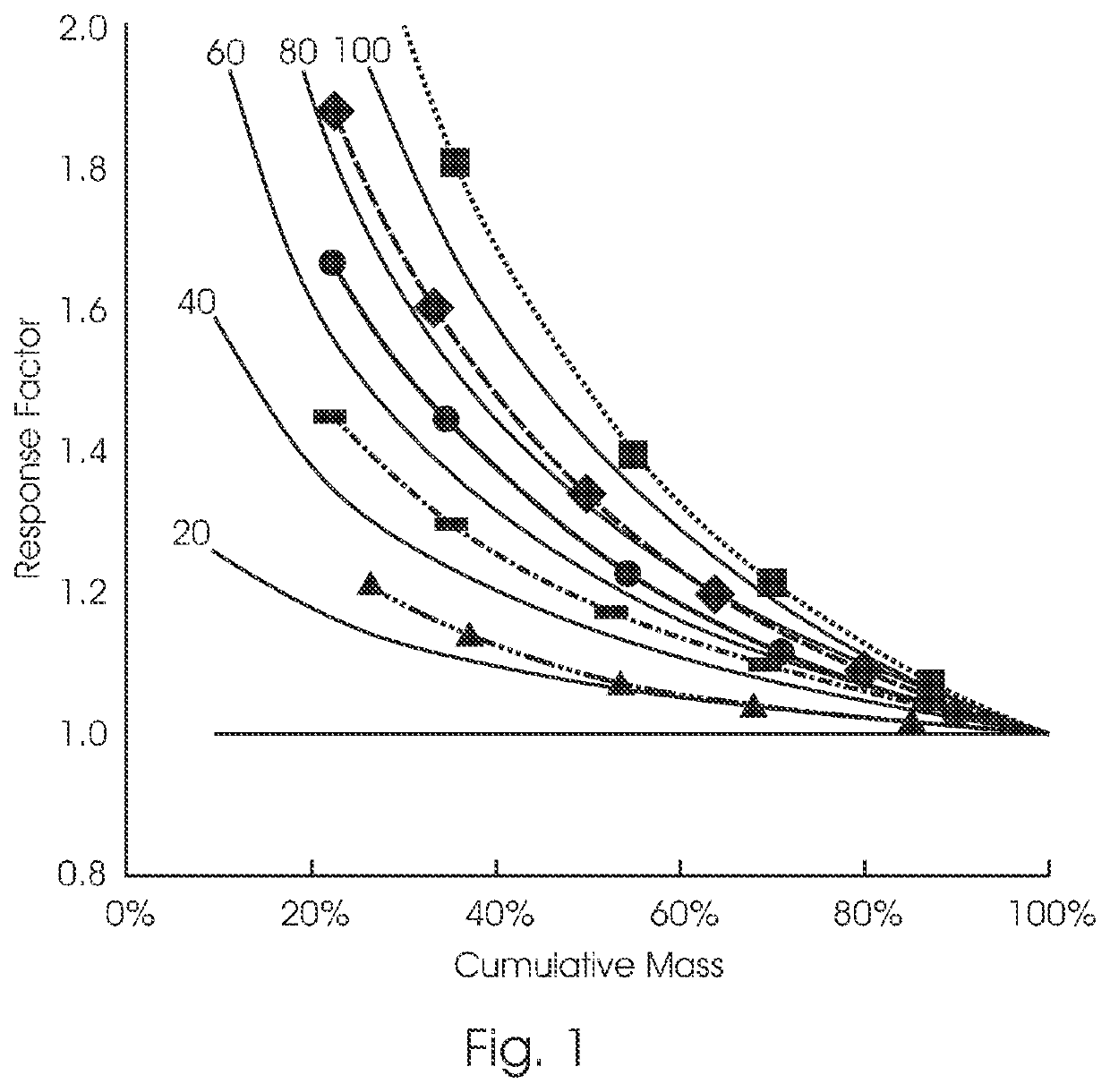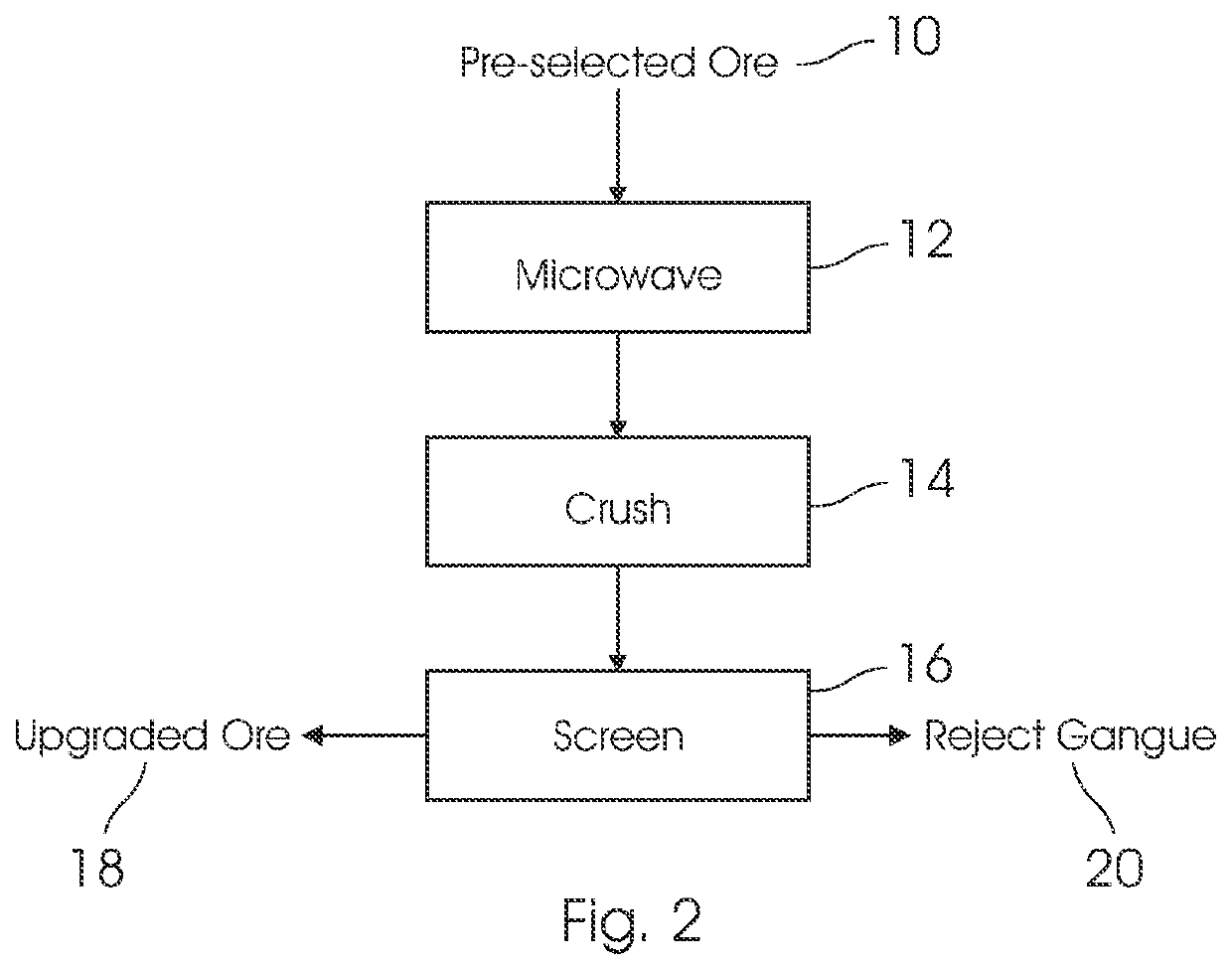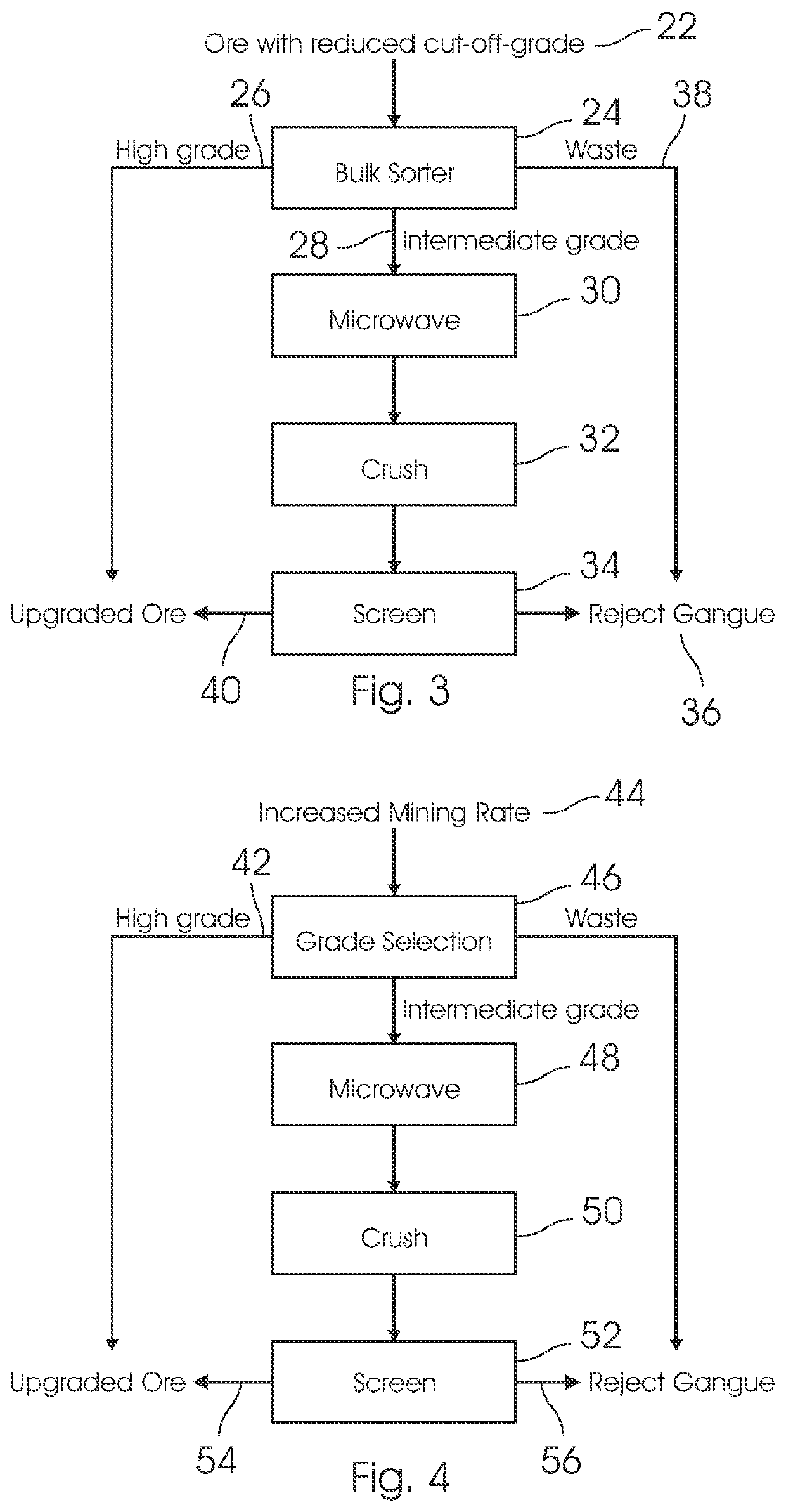Gangue rejection from ores
- Summary
- Abstract
- Description
- Claims
- Application Information
AI Technical Summary
Benefits of technology
Problems solved by technology
Method used
Image
Examples
first embodiment
[0104]FIG. 3 shows a process of the invention designed to maximise resource recovery from a given ore resource. Ore 22 is separated by grade control procedures and a bulk sorter 24 and potentially bulk sorting into two or more streams, selected on the basis of grade. The higher-grade stream 26 is blended with the upgraded ore 40 from the screening process 34 and is assigned directly to the conventional comminution (further processing.
[0105]In bulk sorting, ore that has been fragmented by blasting, is typically transported by truck or conveyor to a primary crusher, and by conveyor to grinding. On the conveyor either before or after the primary crusher, the grade of the ore (or deleterious contaminants) can be analysed, using techniques such as prompt gamma neutron activation analysis, for example an on-conveyor PGNAA Analyser as supplied by several suppliers, for example a cross belt analyser available from SODERN, which makes use of an electrical neutron source with stabilised emiss...
second embodiment
[0119]FIG. 4 shows a process of the invention designed to enhance production by feeding higher grade ore to processing.
[0120]Most open pit copper and gold mines are designed such that their bottleneck is the grinding operation to prepare the ore for flotation or leaching. In this second embodiment, the invention is utilised to reject a higher proportion of the gangue than in the first embodiment, thus leaving a higher grade of ore to proceed to conventional processing, where the increased grade of ore feeding the mills represents increased production.
[0121]Relative to the first embodiment, a higher cut-off-grade (CoG) 42 of the RoM 44 is selected by grade control or bulk sorting 46. This results in microwaving 48 a higher grade of ore, albeit that the fraction microwaved is the lower (intermediate) grade available from grade selection.
[0122]The operating conditions used in the configuration typically promote extensive cracking during microwave process, to promote the size-based depo...
third embodiment
[0126]FIG. 5 illustrates the invention designed to achieve the desired grade by prescreening the ore where liberation of values is naturally problematic. RoM is selected by grade control or bulk sorting 60 to provide a high-grade stream 62 and an intermediate grade stream 64 which is crushed 66 and screened 68. Based on the natural deportment of values to the fines, the screen size is selected to generate a lower grade fraction 70 suited to microwaving, and a high grade fraction 72. This has a co-benefit of microwaving only the rocks or sand which are more difficult to fracture in conventional crushing equipment. The lower grade fraction 70 is subjected to microwave irradiation 74, and sent for crushing 76. After crushing 76, and crushing with lower energy input to avoid fracture of the predominance of the gangue, and finally by selecting a smaller screen size 78 to capture the high-grade feed 80 for conventional processing, and a reject gangue 82.
[0127]If the constraint to the oper...
PUM
| Property | Measurement | Unit |
|---|---|---|
| Fraction | aaaaa | aaaaa |
| Fraction | aaaaa | aaaaa |
| Fraction | aaaaa | aaaaa |
Abstract
Description
Claims
Application Information
 Login to View More
Login to View More - R&D
- Intellectual Property
- Life Sciences
- Materials
- Tech Scout
- Unparalleled Data Quality
- Higher Quality Content
- 60% Fewer Hallucinations
Browse by: Latest US Patents, China's latest patents, Technical Efficacy Thesaurus, Application Domain, Technology Topic, Popular Technical Reports.
© 2025 PatSnap. All rights reserved.Legal|Privacy policy|Modern Slavery Act Transparency Statement|Sitemap|About US| Contact US: help@patsnap.com



